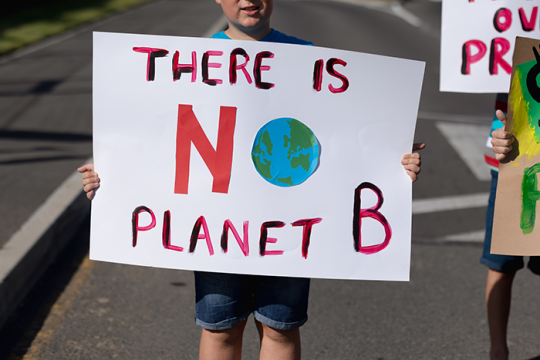
Climate change has the potential to lead to the destruction of some of our most cherished natural and cultural heritage sites. A joint report issued by UNESCO, the United Nations Environment Program and the Union of Concerned Scientists highlights the threat World Heritage sites are facing as a result of climate change. 31 natural and cultural heritage sites in 29 countries were found to be threatened by environmental factors such as increased temperatures, glacial melting, sea level rise, extreme weather, droughts and increased wildfires. Climate change threatens more than the wonders and history of these sites, it threatens the communities around them, many of whom are supported through tourism revenue. Below are five examples of sites impacted:
Statue of Liberty, New York
The structural damage from Superstorm Sandy in 2012 led to increased awareness about potential threats to the Statue of Liberty from rising sea levels and extreme weather. Designated as a UNESCO World Heritage Site in 1984, it stands as a symbol of the migration of people to the United States and “inspiring contemplation, debate, and protest – of ideals such as liberty, peace, human rights, abolition of slavery, democracy, and opportunity.” The Statue of Liberty attracts approximately four million visitors each year. As a result of closure for much of 2013 due to Sandy, visits fell below two million that year.
Venice, Italy
Venice is considered one of the sites most threatened by extreme weather and sea-level rise due to its marsh landscape and waterfront properties. The report predicts that as water levels rise, the barriers will be ineffective at blocking the canals and the historic architecture of Venice will sink into the sea. Built on 118 small islands, Venice was designated as a World Heritage site in 1987, as the home to “unique artistic achievement” and the “the link between the East and the West, between Islam and Christianity,” which is exemplified through many monuments and vestiges.
Yellowstone National Park, Wyoming
With warmer winters and less snow, researchers predict more frequent and severe wildfires that would damage the ecosystems in the park. Additionally, lack of precipitation and warmer temperatures are causing lakes, rivers and wetlands in Yellowstone to shrink, threatening the species that rely on them. Yellowstone became the world’s first national park at its creation in 1872, initiating a system that has been replicated throughout the world. In 1978, Yellowstone was designated as a World Heritage site due to its diverse ecosystem, wildlife, landscape and geothermal features. With more than four million tourists each year, Yellowstone supports over 5,000 jobs and brings in more than $300 million for the surrounding community.
Galapagos Islands
Global climate change trends such as rising sea levels, warming oceans and atmosphere, acidification and changes in rainfall and weather patterns threaten the 19 islands and their unique biodiversity. Over half of the Galapagos economy is generated by tourism, which is estimated to provide about $63 million annually for the local economy. UNESCO designated the Galapagos Islands as a World Heritage site in 1978 due to their unique biodiversity, significant role in the development of Darwin’s theory of natural selection and important clues about species evolution under changing conditions.
Stonehenge, United Kingdom
Sea-level rise, increased frequency and intensity of storms and rainfall, and coastal erosion threaten this historic site and many more throughout the UK. Warmer winters are expected to increase burrowing mammal populations and increased rainfall will lead to greater flood, both of which have the potential to destabilize the stonework. As the “most architecturally sophisticated prehistoric stone circle in the world” the Stonehenge was designated as a World Heritage site in 1986.
As a Reform Jewish community, we are commanded, “Do not destroy my world, for if you do, there will be nobody after you to make it right again” (Midrash Ecclesiastes Rabbah 7:13). Once these sites are destroyed, all the history and wonder they represent will be gone with them. Therefore, we must take action to curb our emissions and promote adaptation and mitigation efforts across the world. Urge your Member of Congress to support funding for the Green Climate Fund, a fund established to help vulnerable communities face the immediate impacts of climate change and reduce their emissions for the future.
Image courtesy of Flickr/Celso Flores
Related Posts

Remarks from Rabbi Eliana Fischel at Jewish Gathering for Abortion Access

Teens from North Carolina Speak About Environmental Justice


